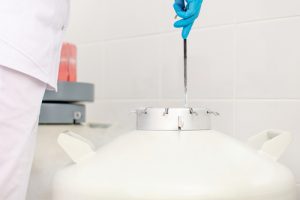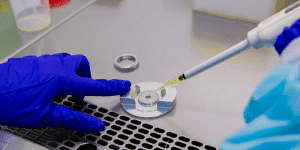It’s safe to say that many women would want to be mothers at some point. Unfortunately, family planning isn’t always smooth sailing. Many factors, from poor timing to undergoing chemotherapy, can stall a couple’s conception journey. Also, some couples prefer to start a family a bit later in life and have trouble with it.
A myriad of factors can get in women’s way of becoming mothers, especially as they age. If you’re one of the women looking for options, consider embryo freezing.
Embryo freezing is a process that takes a successfully fertilized embryo and freezes it for later use. These embryos are taken through in vitro fertilization (IVF), which saves time and resources for the potential parents.
What You Should Know About Embryo Freezing
Before we dive into the freezing process, it’s important you understand how IVF works. In vitro fertilization specialists take the sperm cells and eggs of an expectant couple and combine them in a dish.
Once the sperm fertilizes the egg, they become an embryo, which may take several days. The successful embryo is either implanted into the mother’s womb or frozen for later use.
If the mom chooses cryopreservation, or freezing the embryos, she can have them thawed and inserted in her uterus at any later point. Many potential mothers believe this is a practical option because you won’t waste any leftover successful embryos as you would with an IVF implantation. Additional fertilized embryos can be used for future pregnancies, donated to other mothers or used for research.
The Cryopreservation Process

To protect the structure of the embryos, special fluids called cryoprotective agents are gradually added to the embryos. Then, they’re cooled for two hours in a machine before being stored in liquid nitrogen. This is called the slow-freezing method.
Some fertility specialists use the vitrification method. Rather than slowly freezing the embryos, this rapid-freezing technique uses CPAs with a higher concentration. Since stronger CPAs can hurt the fertilized embryo, the protective agents are quickly infused before being placed in liquid nitrogen.
Once they’re in the liquid nitrogen, the fertilized embryos will take a glass-like form. This prevents them from solidifying into ice during the freezing process.
When you’re ready to use the embryo, it is carefully thawed out before being soaked in a CPA-removal solution. This removal solution helps restore the embryo to its natural state.
Typically, the thawed embryos are unharmed and don’t have a higher amount of birth and health defects than those that are conventionally conceived. Most frozen embryos do not have an expiration date, even though some countries have maximum freezing times.
Family planning is a special time in a couple’s relationship. Whether you’re having a procedure that may make pregnancy difficult, you’re not ready to be a mom or you’re at an age when fertility is declining, freezing your embryos allows you to eventually have your bundle of joy.
Are you still on the fence about freezing your embryos? Set up a consultation. Your fertility specialist can give you advice based on your specific needs. They can also answer any financial questions you may have. The more information you have, the greater your chances of having a healthy baby will be.
>>Click here for a look at Egg Freezing: Fertility without an Expiration Date?




